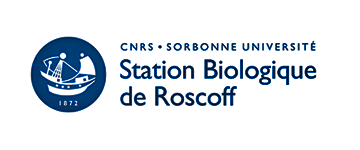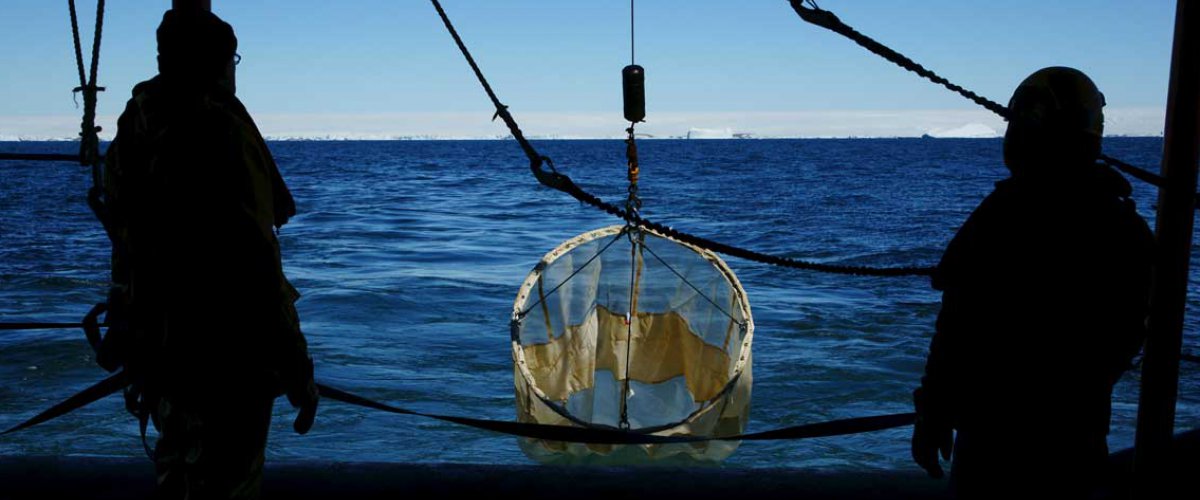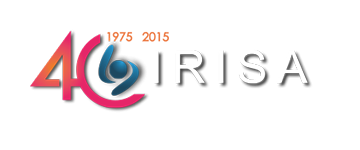Presentation
This diversity is stunning in the ubiquitous marine cyanobacterium Synechococcus, one of the two most abundant oxygenic phototrophs on Earth.
Six distinct pigment types or subtypes have been described thus far in this genus, with the most sophisticated one being able to change its pigmentation according to the ambient light colour (green or blue).
This large range of pigmentation likely plays a crucial role in the Synechococcus community structure. It arises from differences in the composition of the light-harvesting complexes (‘phycobilisomes’ or PBSs), which comprise various combinations of ‘phycobiliproteins’, each binding one to three different types of chromophores (or ‘phycobilins’).
Most genes involved in the synthesis and regulation of PBS ‘rods’ (the most variable part of PBSs) are gathered into a specialized genomic region ranging in size from 9 to 28.5 kbp.
Electron microscope photograph of Synechococcus sp. WH7803 (Kana & Glibert, 1987, Deep-Sea Res. 34:479-485)
i) in culture, by sequencing 20 new cultured Synechococcus strains (in addition to the 11 genomes currently available) and
ii) in the field, by sequencing fosmids containing the main PBS region from natural Synechococcus populations collected in different trophic regimes in the Mediterranean sea.
Sequencing will be done at Genoscope in the framework of the MetaSyn project that was accepted in 2008.
Thus, the PELICAN project aims at covering all staff and functioning costs for sample preparation, bioinformatic analyses, functional characterization of PBS genes and molecular ecology studies exploiting the genome database.
we will re-compile an existing local database of groups of orthologous genes (Cyanorak) and re-design the corresponding web interface.
While the current database includes 14 genomes of marine picocyanobacteria, the new database (Cyanorak2) will include 43 genomes (including 31 marine Synechococcus) as well as all the PBS gene regions retrieved from field samples.
The private version of the web interface will allow us to manually annotate both individual genes and clusters of orthologs.
Furthermore, an elaborate visualization system will be developed to allow us to easily compare genomic regions.
Cyanorak 2 will include 43 genomes (including 31 marine Synechococcus) as well as all the PBS gene regions retrieved from field samples.
Link(s)
The PELICAN project includes a large post-genomics part aiming at characterize some of the novel genes/proteins uncovered during massive sequencing.
We will make systematic searches for amino acid motifs included in sequences of all PBS-related gene products in order to help us assign them a function. We will also use genetic approaches such as overexpression in Escherichia coli and will determine the 3D structure of selected targets. At last, our project includes a part on the ecology and distribution of Synechococcus pigment types in the field.
The information on gene variability generated during the project will be used to design reliable real time PCR primers for each pigment type that will then be used to accurately measure their abundance and distribution in a variety of environments.
1. to gain new insights into the relative abundance of the different Synechococcus pigment types in the field along natural physico-chemical gradients
2. to improve our understanding of the evolution and mechanisms of lateral transfer of phycobilisome genes between Synechococcus lineages
3. to discover new pigment types and novel phycobiliproteins of potential commercial interest.








